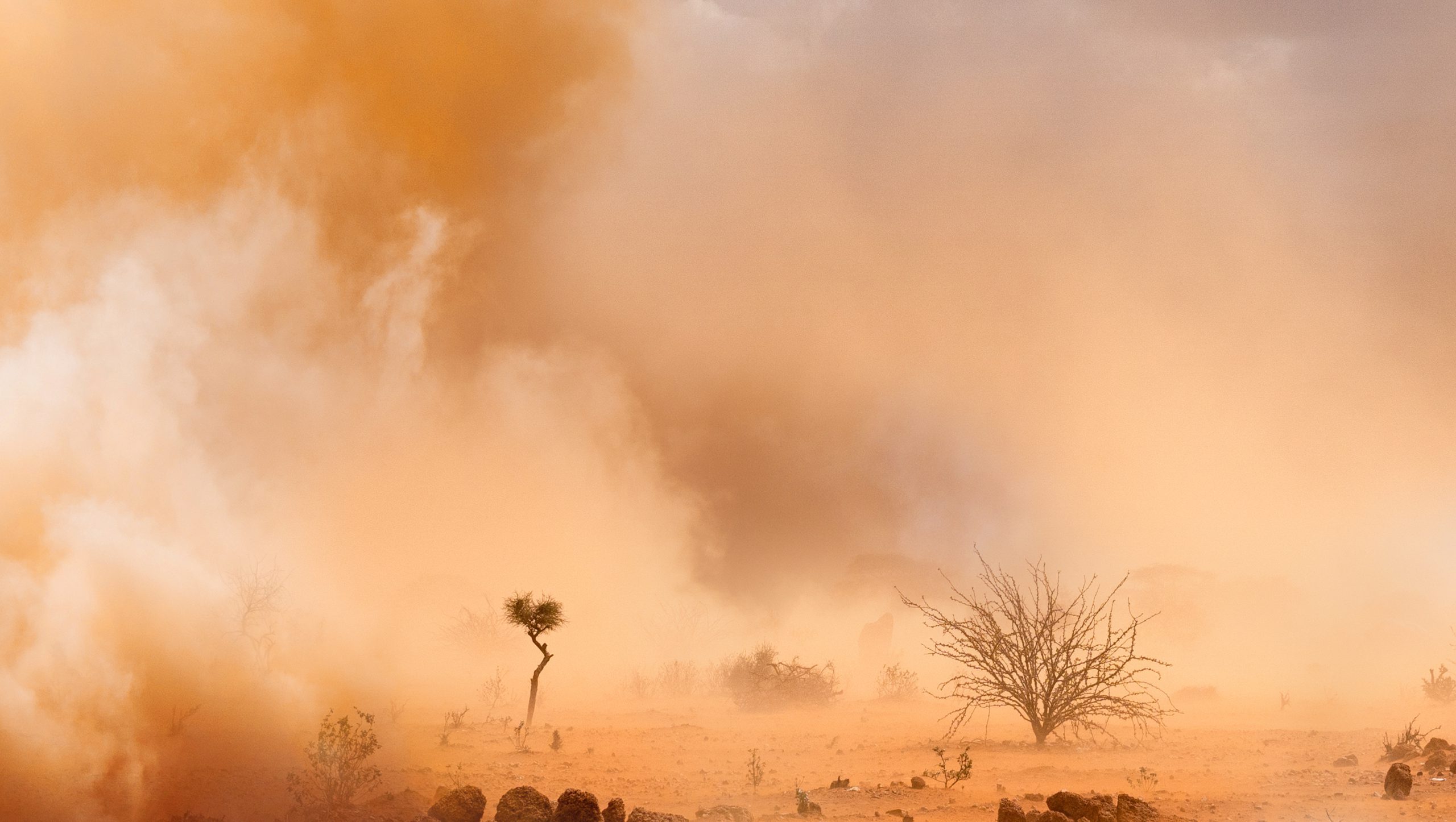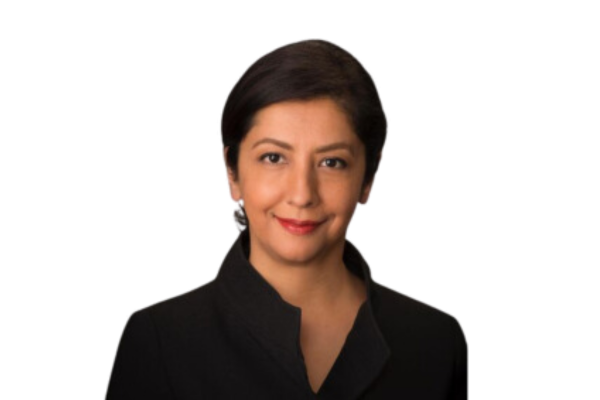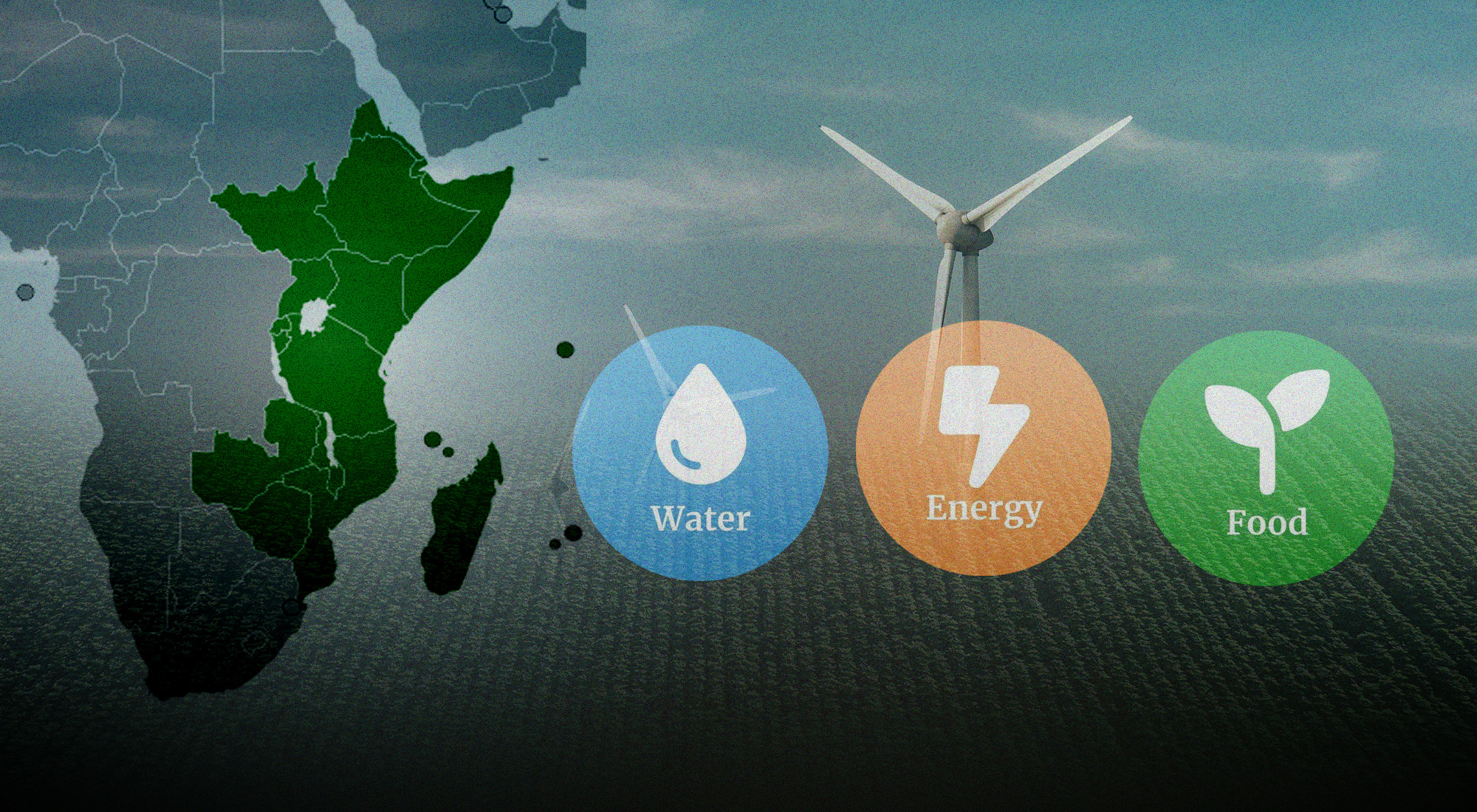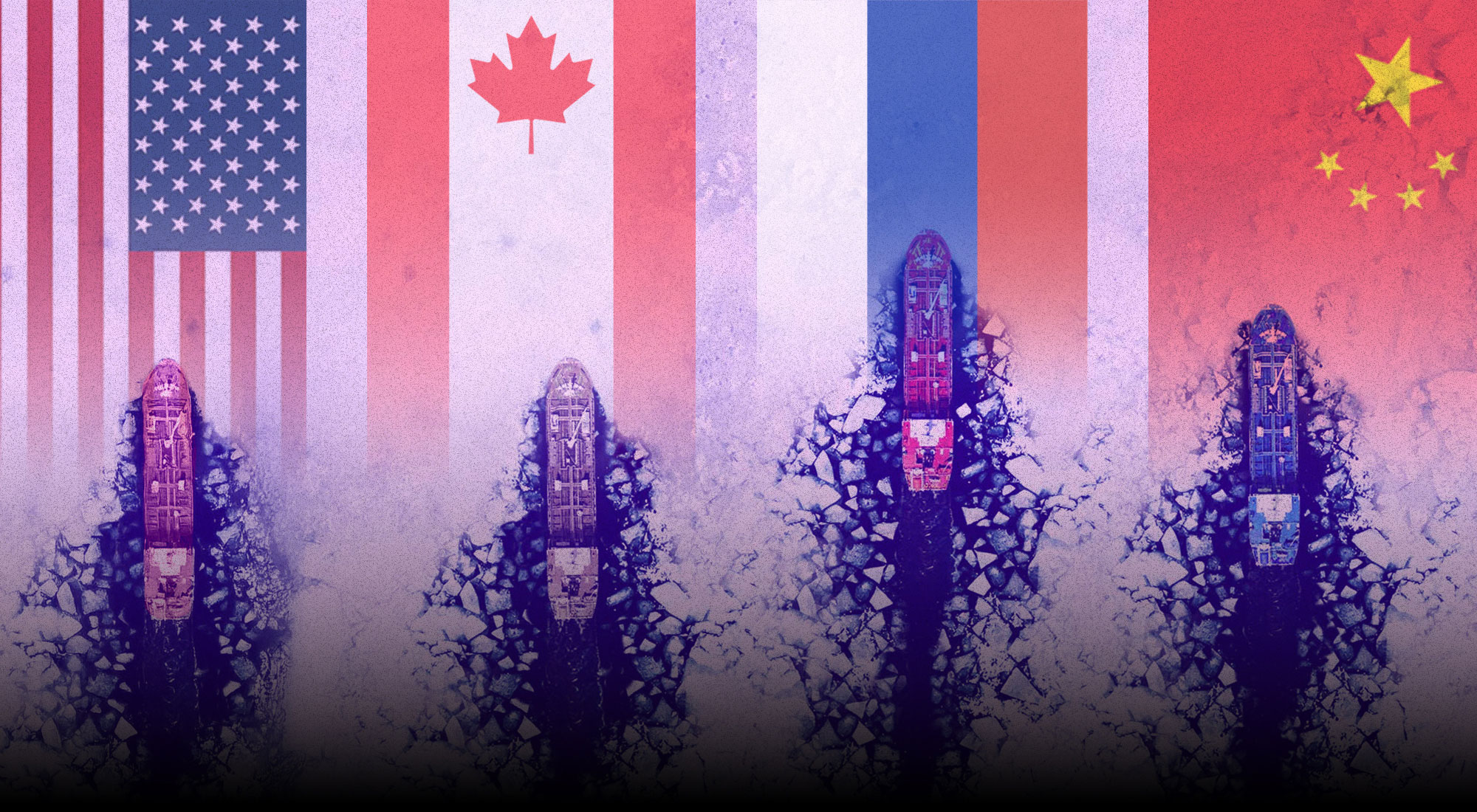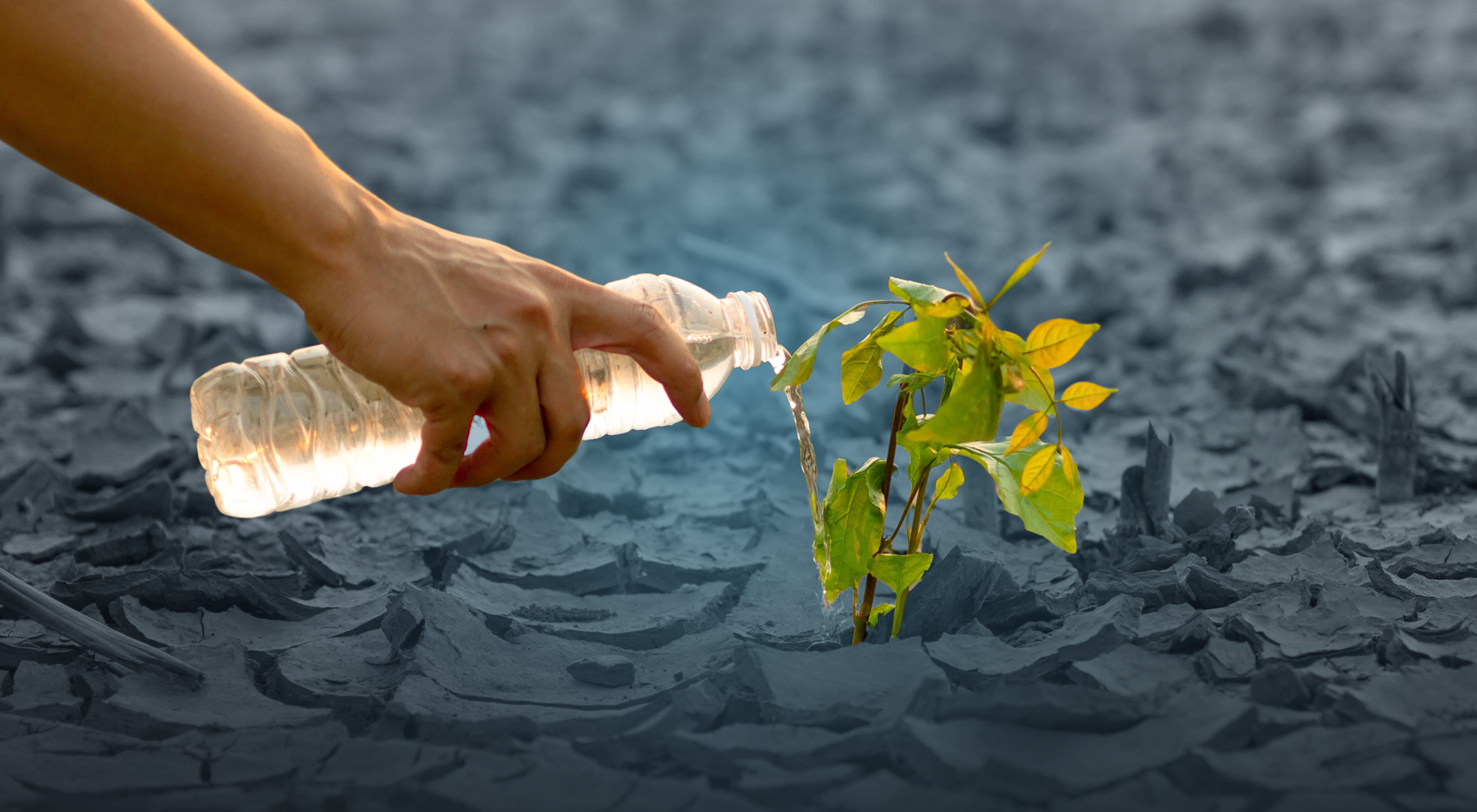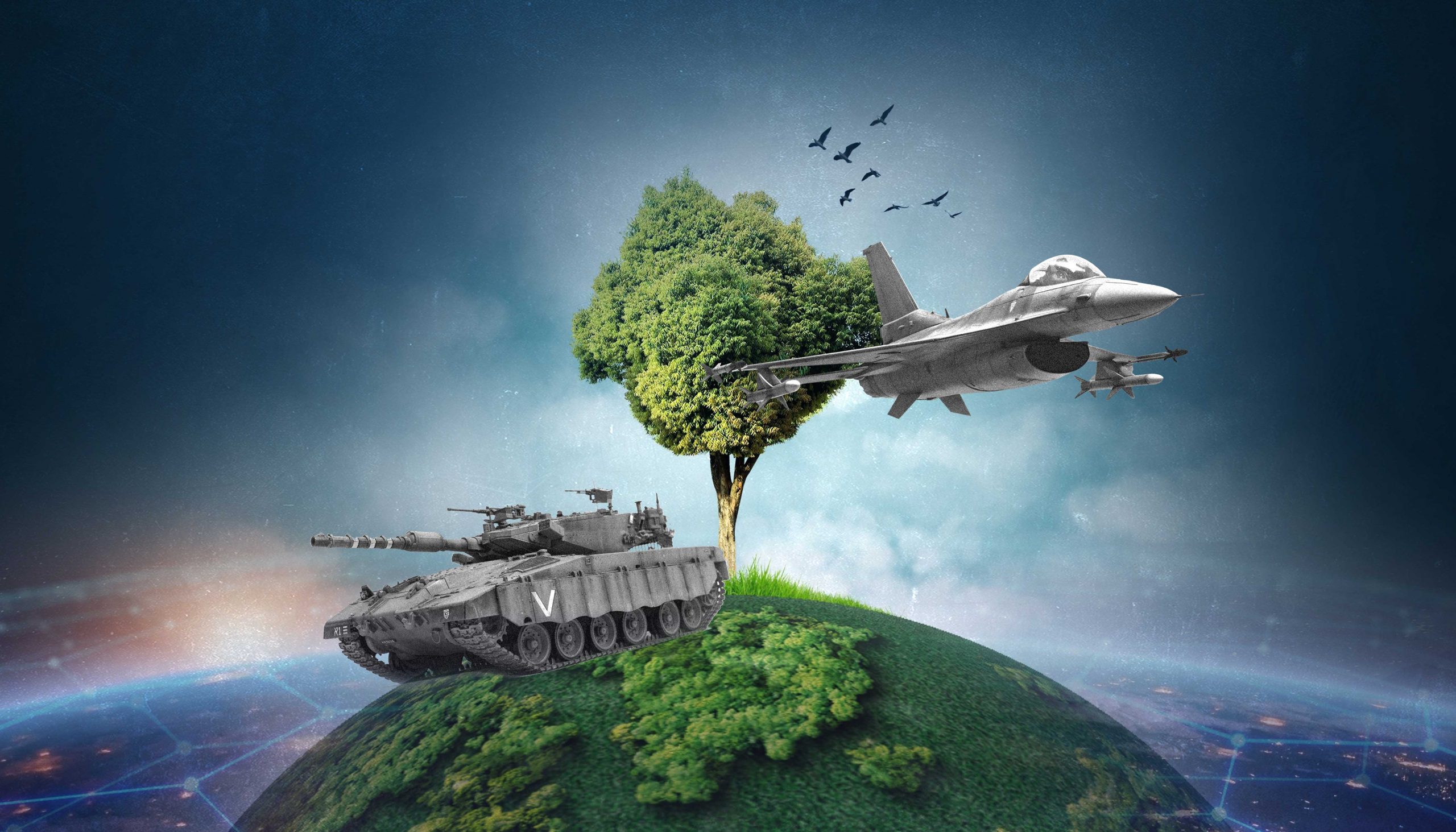As sand and dust storms (SDSs) swept over Ahwaz in southwestern Iran in late Spring and early Summer this year, residents struggled to see the front gates to their homes as they sought shelter from the sand-blanketed streets. Many stayed indoors for days, grappling with layers of dust that seeped in. In Iran’s capital city of Tehran, many residents turned off their cooling systems – despite the scorching summer heat – to prevent the sand and dust from entering their homes, while schools and offices briefly closed until the storms settled.[1]
Across the Gulf region, airports temporarily shut down, disrupting commercial flights and causing the suspension of maritime operations in three major ports in Kuwait. Dubai’s Burj Khalifa, the world’s tallest building, briefly disappeared from sight. In Riyadh, the iconic Kingdom Center was covered in a grey haze as storms swept across Saudi Arabia. Hospitals in Iraq stockpiled oxygen cannisters as they treated over 4,000 patients with breathing problems, while in Saudi Arabia almost 1,300 people were hospitalized in just one day due to respiratory problem resulting from the sandstorm.[2]
Abu Dhabi’s air quality index hit hazardous levels in face of the storms blowing at 25 miles per hour. In Iran’s southeastern region, SDSs reached 122 km per hour in the city of Zabul,[3] while storms hit Kuwait at a range of 93-109 km per hour.[4]
Giving a name to these ill-tamed storms is as hard as living with them. In Iran, SDSs are referred to as “those winds coming from Iraq and Saudi Arabia” or “the Iraqi and Saudi storms.” They are also called “ghost”, “dark”, or “black” storms in Iran and Iraq, depending on the shape and color they take. In the United Arab Emirates (UAE), they are called al-Shamal, referring to a northern wind blowing from Iraq. When they are intense, they are often referred to as haboob.[5]
What are sand and dust storms?
Sand and dust storms are somewhat mysterious given their frequency – which is rapidly increasing – and the little known about their exact causes. There is also a human tendency to simplify the problem by dismissing SDSs as unmanageable natural phenomena. The storms are quick to appear and subside, and easier to ignore as passing incidents.
Quantifying the precise sources of the SDSs is quite challenging. Climate change patterns intensify SDSs, but the storms impact climate change as well. Most SDS events are indeed natural phenomena, but about a third are anthropogenic storms resulting from human activity. Poor land management, overgrazing, fluctuating precipitation, poor agricultural patterns, land degradation, deforestation, desertification, dry riverbeds, low vegetation, and lack of protective vegetative barriers all intensify sand and dust storms.[6]
According to the World Bank, dust storms occur at greater frequency and intensity in the Middle East and North Africa (MENA) due to the region’s proximity to the Sahara Desert in Africa, a continent that has already lost most of its forest cover.[7] The Sahara emits four times more dust than the deserts in the Arabian Peninsula, which travels through the Suez Canal and descends over the Gulf region.
SDSs are most prevalent in northern Iraq, between the Tigris and Euphrates rivers, but also stem from clusters of anthropogenic and hydrologic sources along the east side of the Jordan River, the Atlas Mountains, the southern Sahel, the dry riverbeds in Saudi Arabia, and the Mediterranean Sea, where the extremely dry al-Bawareh winds blow into the eastern Arabian Peninsula and the Empty Quarter.[8]
Hypersaline conditions resulting from desalination processes whereby residual brine is dumped into the Gulf – now 1.5 times higher in salinity than 15 years ago – also contribute to regional sand and dust storms.[9] There are hundreds of desalination projects in the region, which account for more than half of the global desalination production.[10]
Latecomers to these desalination projects, like Iran, are vowing to build new desalination plants as well as shipping channels for trade purposes, connecting the Gulf to the Caspian Sea through North-South water corridors, adding to the environmental stress that could cause more intense sand and dust storms. The latter project, dubbed the Hope Transfer Line, is also aimed at fighting drought while at the same time delivering water to industrial and agricultural zones in the country by means of increased water desalination.[11]
Iran’s southeastern regions experience SDS events as a result of anticyclones – large rotating wind systems – over Central Asia. Sand and dust storms are also expected to increase in the Aral Sea, which has dried up considerably in recent decades, potentially impacting Iran. Iran’s northwestern Lake Urmia has also lost around 95 percent of its water volume over the past two decades, which could impact the severity of SDSs coming from the west or the Mediterranean region.
Drought is a major contributor to sand and dust storms in Iran and Iraq. The drying Mesopotamia marshes and draining of wetlands in the area – partly the result of water diversion plans that were implemented in Iraq decades ago – are contributing to an increase in SDSs. Water-intensive agricultural cultivation and irrigation patterns between the borders of Iran and Iraq are also likely intensifying sand and dust storms. Practices in the two countries to harness cross-border water and river flows, including Iran’s dam-building spree and the Iraqi Kurdish region’s plans to build more dams, are weakening water streams across the borders, which coupled with poor water management are increasing the frequency and intensity of SDSs.[12]
Environmentally, SDSs contribute positively to the Earth’s biogeochemical cycles. They contain nutrients and particles needed for plant-like organisms in the oceans.[13] Airborne dust also absorbs solar radiation and long-wave surface radiation, reducing the amount of radiation that reaches the Earth – though SDS sediments on ocean surface water can cause higher solar radiation absorption in oceans.[14]
In Iran, reports show that SDSs can cause a sudden rise in river flows, flooding or rainstorms.[15] SDSs also pose a danger to health as a result of particles and pollutants altering air quality – not just at the epicenters of the SDSs but also thousands of miles away. For example, the Saharan SDSs can impact air quality as far as the State of Florida in the United States. While most health issues resulting from SDSs subside, the health risks posed by SDSs are becoming more serious.[16] According to the World Health Organization, each year millions of people are impacted by poor air quality resulting from sand and dust storms.[17] Though the coarse particles characteristic of SDSs do not typically pose a serious health threat, those with diabetes, heart conditions or breathing-related issues are at increased risk of asthma attacks, heart disease and serious pulmonary disorders.[18]
What is being done to mitigate sand and dust storms?
The United Nations (UN) published the first global assessment of sand and dust storms in 2016 to lay out a scientific approach to mitigate these storms.[19] Since then, new information has emerged to help better understand SDSs. Globally, welfare loss from dust storms was estimated to be around US$ 3.6 trillion toward the end of 2019. Welfare loss in the MENA region, in the same period, was roughly US$150 billion, or roughly US$13 billion lost annually in the region in a decade.[20] This is because SDS events alter socio-economic life, agricultural production patterns, trade routes, and even green initiatives designed to mitigate them.
The biggest welfare loss in the region reportedly occurs in Egypt and Iran, and may also include Iraq based on projections that the country will experience 300 sand and dust storms per year within the next decade.[21] Storms from the Sahara have caused severe disruptions in the Suez Canal, through which 12% of global trade passes.[22] In Kuwait, maritime operations are frequently suspended amid the country’s efforts to become a major trade hub. In several governorates in Oman – particularly Musandam, Al Buraimi, Al Dhahirah and Al Wusta – dust from sandstorms often shroud the skies, causing decreased visibility.[23] SDS-induced flooding last year killed more than a dozen people in Oman and Iran, while dense dust storms draped Qatar this year.[24]
Although SDSs are still widely viewed across the Gulf region as being ungovernable, some counties have taken proactive steps to mitigate the causes and impacts of these storms. Kuwait, which is frequently hit by sand and dust storms, has built vegetation and wall barriers to protect against strong winds. In Iraq, ten oases in its western desert, an area that covers most of the country from north to south and on the west, are being restored – though with delays due to financial mismanagement.[25] Saudi Arabia, which is home to the world’s largest sand desert, is building massive green belts and planting 10 billion trees across the country as part of the Saudi Green Initiative.[26] Tree planting initiatives are also underway in Iran. The UAE, on the other hand, has invested in a real-time dust storm forecasting system, managed by the Masdar Institute of Science and Technology.[27]
A number of national and regional policies in the Gulf are designed to boost early intervention against SDSs, and can be further strengthened. But sanctioned countries, such as Iran, or conflict prone countries like Iraq and Yemen, have fewer options to develop domestic master plans to mitigate SDSs. Still, the transboundary flow of SDSs carries transnational mitigation responsibilities as their impact alters life across regions and in different countries.
Existing region-wide mechanisms in place aim to ensure that SDSs do not impact public safety. The World Meteorological Organization Sand and Dust Storm Warning Advisory and Assessment System (SDS-WAS) for Northern Africa, Middle East, and Europe is an interregional high quality SDS forecast system designed to enhance the ability of countries in the region to deliver timely information, raise awareness, and train experts to harness the latest research and science on SDSs.[28] The UN-coordinated West Asia Regional Master Plan to Combat Sand and Dust Storms monitors SDSs in the region and invests in mitigation measures, while the Convention on Long-Range Transboundary Air Pollution shares regulations to protect against wanton pollution.[29] UN-led international coalitions are also assisting countries across the Gulf region in combatting sand and dust storms.[30]
The Gulf countries are also taking steps to address the issue of salinity in the Gulf waterway, in face of an expected 20% decrease in natural freshwater resources due to climate change.[31] To date, these countries have not made efficient use of the electrical or pressure methods for desalination purposes,[32] whereby the former utilizes electric currents to remove salt from water while the latter involves reverse osmosis to push water through a permeable membrane. Though both methods are used for treating water with salt concentrations, they are not suitable for sea water.[33] The region’s use of thermal capacity for desalination purposes is high due to the availability of low-grade steam from gas-fired power plants. However, many Gulf states are gradually turning to innovative hybrid technologies to avoid compromising the Gulf’s fragile ecosystem and to help restore the waterway’s biological and ecological balance.[34]
The MENA region remains deeply impacted by climate change patterns that intensify SDSs, which combined with expected rising temperatures in the region, may render parts of Gulf uninhabitable or lead to climate-induced human migrations. By recognizing the obvious risks of human-induced activities that intensify SDSs, the region can embark on a new era to control and mitigate anthropogenic sources of SDSs through proper investments and updated technologies. This would improve public health, agricultural practices, industrial plans, and land and water management projects geared toward handling SDSs at localized small-scale levels as well as at region-wide levels.
Simple actions to mitigate SDSs could include enhancing vegetation; mulching to cover open ground surfaces with protective materials like crop residues, stones, rocks and geotextiles; creating more tree buffers; stabilizing soil surface by adding cement or chemicals to change soil make-up or through mechanical compaction to densify soil; and building concrete walls as barriers to storms. At the regional and international levels, the Gulf states should participate in UN-coordinated coalitions to address SDSs while adhering to UN conventions to support the environment and to reverse climate change. More importantly, the region should begin thinking of how to reverse the cost of welfare loss due to SDSs throughout the MENA region through timely mitigation to improve the quality of life.
References
[1] Giorgio Cafiero, “‘Vicious Cycle’: Storms Intensify in the Gulf as Climate Changes,” Aljazeera, June 2, 2022, https://www.aljazeera.com/news/2022/6/2/a-vicious-cycle-intensifying-storms-in-gulf-as-climate-changes.
[2] “Dubai’s Burj Khalifa Vanishes in a Layer of Dust Amid Sandstorm,” NDTV, May 18, 2022, https://www.ndtv.com/world-news/dubais-burj-khalifa-vanishes-in-a-layer-of-dust-amid-sandstorms-2987162; “Sandstorm Blankets Parts of Middle East, Raising Alarm,” Aljazeera, May 23, 2022, https://www.aljazeera.com/news/2022/5/23/sandstorm-blankets-parts-of-middle-east-raising-alarm; Ismaeel Naar, “Why Are Sandstorms Becoming More Common in the Middle East?” The National, May 18, 2022, https://www.thenationalnews.com/mena/2022/05/18/why-are-sandstorms-and-extreme-weather-changes-more-common-in-the-middle-east/.
[3] “Speed of Sandstorm in Zabul Reached 122 km/h,” Fararu [Arabic], August 11, 2022, https://bit.ly/3AkMI8i.
[4] Banafsheh Keynoush, “Severe Sand and Dust Storms Are an Underrated Risk in the Gulf Region, despite Mitigation Measures,” Middle East Institute, March 14, 2022, https://www.mei.edu/publications/severe-sand-and-dust-storms-are-underrated-risk-gulf-region-despite-mitigation.
[5] Ibid.
[6] World Bank Group, Sand and Dust Storms in the Middle East and North Africa (MENA) Region: Sources, Costs, and Solutions (Washington, DC: The World Bank, 2019), https://bit.ly/3TeXLJc.
[7] Ibid.
[8] Keynoush, “Severe Sand and Dust Storms Are an Underrated Risk in the Gulf Region”; World Bank Group, Sand and Dust Storms in the Middle East and North Africa Region (MENA).
[9] Ronald Smith, Anton Purnama, and H. H. Al-Barwani, “Sensitivity of Hypersaline Arabian Gulf to Seawater Desalination Plants,” Applied Mathematical Modelling 31, no. 10 (October 2007): 2347-2354, https://doi.org/10.1016/j.apm.2006.09.010; “Persian Gulf Water Has Become ‘One and Half Times Saltier and Two Degrees Warmer’,” BBC [Persian], May 30, 2016, https://www.bbc.com/persian/iran/2016/05/160530_me_persian_gulf_salinity.
[10] Omar Saif, “The Future Outlook of Desalination in the Gulf: Challenges & Opportunities Faced by Qatar & the UAE,” United Nations University (UNU), December 18, 2012, https://collections.unu.edu/eserv/UNU:2647/FutureOutlookDesalinationGulf.pdf.
[11] Banafsheh Keynoush, “With the Hope Line, Iran Aims to Boost Seawater Transfer to Fight Growing Drought,” Middle East Institute, June 9, 2021, https://www.mei.edu/publications/hope-line-iran-aims-boost-seawater-transfer-fight-growing-drought.
[12] Banafsheh Keynoush, “‘Water Diplomacy’ It is Not Enough to Fix Iran-Iraq’s Water Dispute,” Rasanah, September 6, 2018, https://rasanah-iiis.org/english/centre-for-researches-and-studies/water-diplomacy-not-enough-to-fix-iran-iraq-water-dispute/.
[13] World Bank Group, Sand and Dust Storms in the Middle East and North Africa (MENA) Region.
[14] Keynoush, “Severe Sand and Dust Storms Are an Underrated Risk in the Gulf Region”; World Meteorological Organization, Sand and Dust Storms, https://public.wmo.int/en/our-mandate/focus-areas/environment/sand-and-dust-storms.
[15] “Warning on Sandstorm in 7 Provinces in the Country,” Donya-e-eqtesad [Persian], May 25, 2021, https://bit.ly/3QIFD8x.
[16] “Sandstorms Pose Serious Risk to Human Health: WMO,” Arab News, May 20, 2022, https://www.arabnews.com/node/2086261/middle-east.
[17] Navin Singh Khadka, “Middle East Worst Hit by Rise in Sand and Dust Storms,” BBC, June 17, 2016, https://www.bbc.com/news/world-middle-east-36553594.
[18] NSW Government, “Dust Storms,” February 9, 2022, https://www.health.nsw.gov.au/environment/factsheets/Pages/dust-storms.aspx.
[19] “Tracking Sand and Dust Storms,” United Nations Environment Programme, https://www.unep.org/explore-topics/air/what-we-do/tracking-sand-and-dust-storms.
[20] World Bank Group, Sand and Dust Storms in the Middle East and North Africa (MENA) Region.
[21] “Sand and Dust Storm Fact Sheet,” Relief Web, February 11, 2013, https://reliefweb.int/report/iraq/sand-and-dust-storm-fact-sheet; World Bank Group, Sand and Dust Storms in the Middle East and North Africa Region (MENA).
[22] Sophie Tremblay, “The Middle East’s $13 Billion Sandstorm Problem Is about to Get Worse,” CNN, May 24, 2022, https://www.cnn.com/2022/05/25/middleeast/climate-change-sand-storms-mime-intl/index.html.
[23] “Dust Storms Continue to Spread over Parts of Oman,” Times of Oman, May 18, 2022, https://m.timesofoman.com/article/116876-dust-storms-continue-to-spread-over-parts-of-oman.
[24] “Cyclone Shaheen Hits Oman and Iran, Causing Flooding and Deaths,” The Guardian, October 4, 2021, https://bit.ly/3dRqD9S; Menatalla Ibrahim, “Dense Sand Storm Covers Qatar after Claiming Lives across Region,” Doha News, May 24, 2022, https://dohanews.co/dense-sand-storm-covers-qatar-after-claiming-lives-across-region/.
[25] Tremblay, “The Middle East’s $13 Billion Sandstorm Problem Is about to Get Worse.”
[26] “Greening Saudi,” Saudi Green Initiative, https://www.saudigreeninitiative.org/targets/greening-saudi/.
[27] Naar, “Why Are Sandstorms Becoming More Common in the Middle East?”
[28] World Meteorological Organization, “Sand and Dust Storm Warning Advisory and Assessment System (Forecast Maps),” https://public.wmo.int/en/our-mandate/focus-areas/environment/SDS/warnings.
[29] World Bank Group, Sand and Dust Storms in the Middle East and North Africa (MENA) Region.
[30] World Meteorological Organization, “New International Coalition to Combat Sand and Dust Storms,” September 6, 2019, https://public.wmo.int/en/media/news/new-international-coalition-combat-sand-and-dust-storms; Keynoush, “Severe Sand and Dust Storms Are an Underrated Risk in the Gulf Region.”
[31] Keynoush, “With the Hope Line, Iran Aims to Boost Seawater Transfer to Fight Growing Drought.”
[32] Yashar Rajavi, “Water Desalination in the Middle East,” Stanford University, December 7, 2013, http://large.stanford.edu/courses/2013/ph240/rajavi2/.
[33] Tom Parise, “Water Desalination,” Stanford University, December 16, 2012, http://large.stanford.edu/courses/2011/ph240/parise2/; Bahareh Kokabian and Veera Gnaneswar Gude, “Microbial Desalination Systems for Energy and Resource Recovery,” in Microbial Electrochemical Technology: Sustainable Platform for Fuels, Chemicals and Remediation, ed. S. Venkata Mohan, Sunita Varjani and Ashok Pandey (Elsevier, 2019), https://doi.org/10.1016/B978-0-444-64052-9.00041-8.
[34] Saif, “The Future Outlook of Desalination in the Gulf: Challenges & Opportunities Faced by Qatar & the UAE.”



